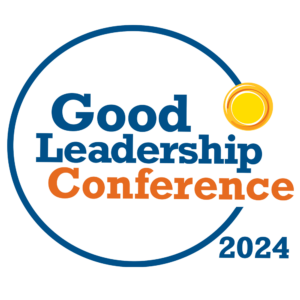

Shifting Healthy Accountability from Character to Systemic Thinking
Kevin Sensenig
Accountability is a topic that evokes strong opinions and emotions, yet its definition has remained surprisingly fluid. Per the learnings accumulated in the ongoing Accountability Research Project, accountability has often been tied to a character-based model—essentially, how individuals perceive and respond to it. This approach makes accountability subjective, varying from person to person. It’s a barrier that prevents organizations from making accountability a healthy concept.
The Good Leadership Healthy Accountability research set out to move beyond this fragmented understanding. The time has come to reshape how to define and practice healthy accountability at every level of the organization: from the executive suite to managers to individual contributors. As the research is beginning to uncover, it’s clear that accountability requires a more systemic, multi-layered approach to truly function consistently in organizations. Let’s explore how it manifests in three key aspects.
Organizational Level of Accountability
At the organizational level, accountability is the backbone of culture. It goes beyond simply meeting financial goals or operational standards. It’s about the collective commitment to vision, values, and shared success. Leaders must set clear expectations, align teams, and create an environment where accountability is seen as a learning and growth opportunity, rather than a punitive concept. This means systems and processes must be in place to ensure transparency, support, and trust. When an organization has this clarity, accountability becomes a healthy concept that guides positive action.
Team Level of Accountability
Teams operate as the engine that drives an organization forward, and accountability on this level requires more nuance. It’s not just about “holding” each team member accountable for their tasks—it’s about creating an environment where individuals seek accountability for important work because they care about delivering good work for their team. This peer-to-peer accountability fosters collaboration, adaptability, and a sense of personal ownership for the team’s collective outcomes. Teams must be equipped with the tools to give constructive feedback to one another, course-correct when needed, and celebrate success. It’s a dynamic process that involves clarity of direction, shared commitments, and communication loops the allow the team to pivot as challenges arise.
Individual Contributor Level of Accountability
On the individual level, accountability becomes personal – rooted in self-awareness and integrity. Each person must understand not only their role within the team and the organization, but also how their work contributes to larger goals. For accountability to be healthy, individuals need to be empowered with the autonomy to make decisions, take ownership of their successes and mistakes, and continuously seek accountability as an opportunity for growth. Individuals must see positive role modeling at the top, feel supported by their team, and know they can work without judgment as they balance competing priorities within their work.

A New Way Forward
It’s becoming clear that accountability can no longer be defined solely through the lens of character. Instead, it must be viewed as a systemic concept that involves every layer of the organization. By creating clarity at the organizational, team, and individual levels, we can reshape accountability into something that drives true collaboration, innovation, and success.
If this glimpse into the Accountability Research Project is stimulating to you, reach out to Jill (jill@goodleadership.com) to find out how you can be at the Good Leadership Conference. At the Conference, the research will be fully unveiled for the first time.



